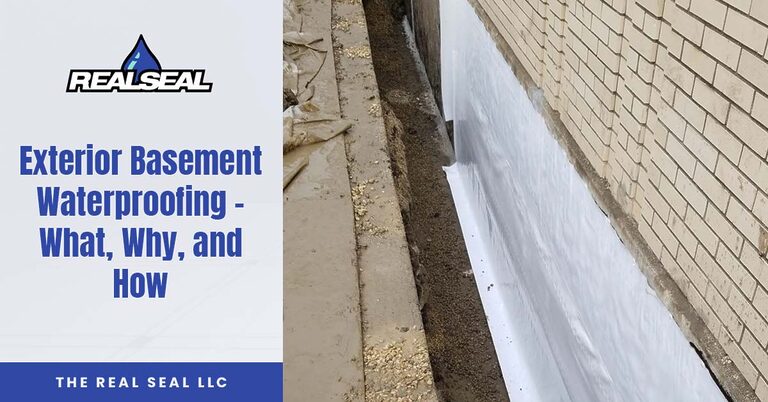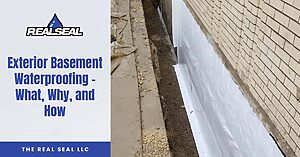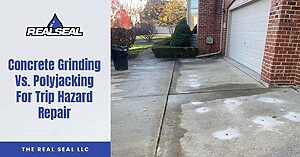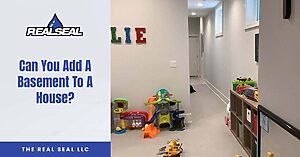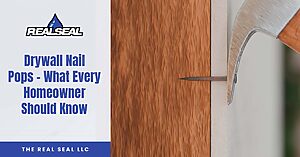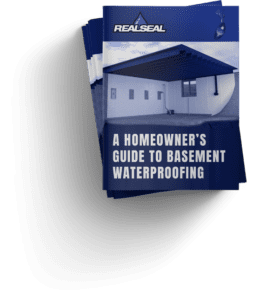Does your basement often feel damp or even show visible water damage? Addressing this issue not only preserves the integrity of your home but also enhances its value and livability. In this post, we’ll explore exterior basement waterproofing—a crucial aspect of home maintenance that every homeowner should consider. You’ll learn what it involves, why it’s essential, and how to implement it effectively.
What Is Exterior Basement Waterproofing?
Exterior basement waterproofing involves preventing water from entering your basement using methods like barriers and drainage systems around the foundation. This approach tackles the problem from the outside, aiming to stop water before it can penetrate your home’s walls. The process often includes installing waterproof membranes, regrading the yard, and setting up drainage systems. Unlike interior waterproofing methods, which primarily manage and redirect water already inside your basement, exterior solutions focus on eliminating the source of the issue. By addressing potential entry points, homeowners can significantly reduce the risk of water damage.
Why Should You Waterproof Your Basement?
Waterproofing your basement is not just about avoiding wet feet; it’s about maintaining a healthy, mold-free environment and preserving your home’s structural integrity. Here are some compelling reasons:
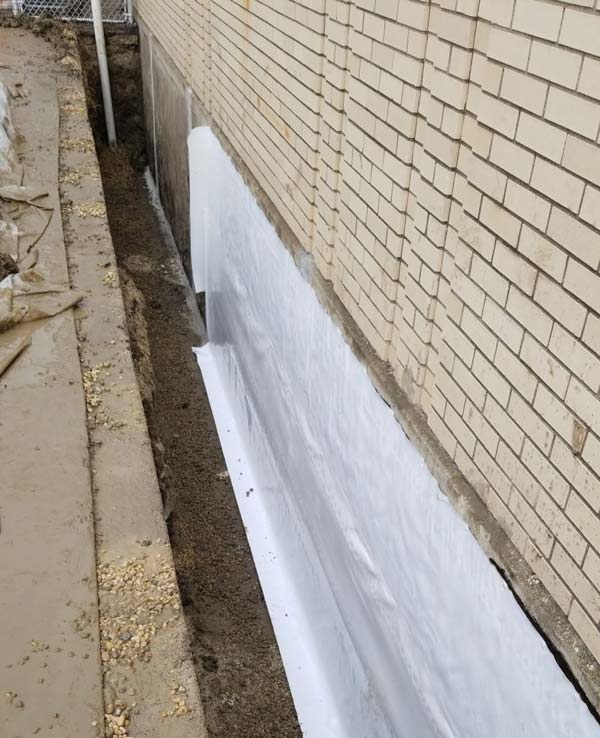
- Prevent Structural Damage: Water can cause severe damage to your home’s foundation over time. Prolonged exposure to moisture compromises structural integrity, resulting in cracks, while hydrostatic pressure can cause basement walls to bow, leading to expensive repairs. Exterior basement waterproofing helps maintain the strength and durability of your home’s foundation.
- Improve Indoor Air Quality: A damp basement is a breeding ground for mold and mildew, which can adversely affect indoor air quality, leading to respiratory issues and allergies. Keeping your basement dry ensures a healthier living environment for your family.
- Increase Property Value: A dry, usable basement adds square footage to your living space. Homes with waterproofed basements are more attractive to buyers, increasing your property’s market value.
While it’s wise to consider waterproofing your basement as a preventative measure, you should take immediate action if you notice any signs of water intrusion. Acting quickly mitigates the risk of costly repairs and ensures your home remains a safe and healthy environment. Consider some of the following warning signs.
Signs Of Water Intrusion In Your Basement
Recognizing the early signs of water intrusion can save you from extensive damage. Here are the key indicators:
- Musty Odor: A persistent musty smell indicates mold growth due to excessive moisture.
- Visible Mold and Mildew: Any sight of mold or mildew on walls or floors is a clear sign of water intrusion.
- Water Stains and Efflorescence: Look for discolored patches on walls and floors. Efflorescence—a white, powdery substance—is a telltale sign of water infiltration.
- Increased Humidity: High humidity levels in your basement can indicate water intrusion, even without visible water. If you frequently notice condensation on windows or pipes or if your dehumidifier is constantly running, it’s a sign that moisture is seeping into the space.
- Cracks in Walls and Floors: Cracks can serve as entry points for water. Pay attention to new or expanding cracks, which may signify worsening water issues.
- Peeling Paint or Wallpaper: Moisture behind paint or wallpaper can cause them to peel or bubble, indicating water seepage.
- Puddles or Standing Water: Any presence of standing water or frequent puddles is an immediate red flag for severe water intrusion.
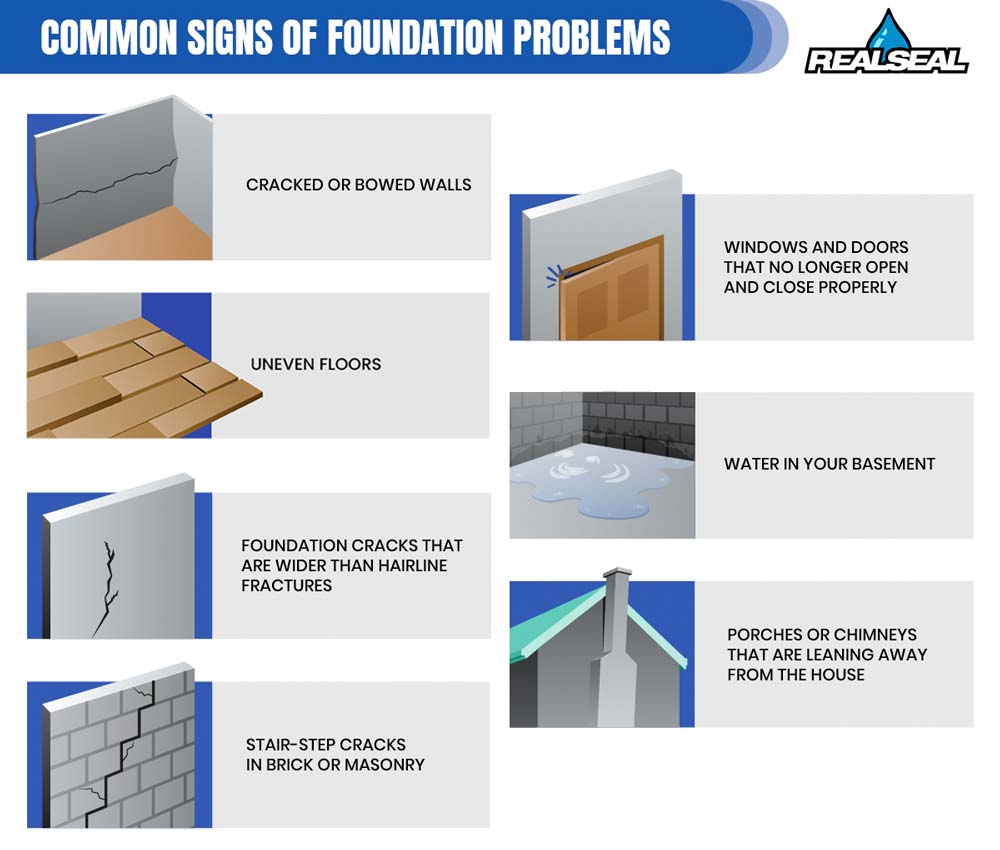
Is It Better To Waterproof A Basement From The Inside Or Outside?
While exterior waterproofing focuses on preventing water from entering the basement in the first place, interior waterproofing involves managing water that has already entered the basement. It typically includes installing sump pumps, interior drain tiles, and vapor barriers to redirect water from the basement.
The choice between interior and exterior waterproofing depends on your specific situation:
Exterior Basement Waterproofing
This method is generally more effective in providing long-term solutions, as it prevents water from entering the foundation. However, it can be more costly and labor-intensive. Because it is below grade, it may also be more difficult to service in the future.
Interior Basement Waterproofing
Interior methods are often less expensive and disruptive but may not address the root cause of water intrusion. They are generally used as a complementary solution to manage water that has already breached the exterior defenses.
Both methods can be highly effective in addressing basement water issues, but their success depends on your home’s specific conditions and requirements. Sometimes, an expert may recommend a combination of both waterproofing strategies. To determine the best solution for your basement, it’s advisable to consult a professional who can assess your situation and recommend the most appropriate waterproofing strategy tailored to your needs.
How To Waterproof The Outside Of A Basement
Waterproofing the outside of your basement involves creating multiple lines of defense to protect against water intrusion. Here are seven essential steps:
- Regrade Yard: One of the first steps in exterior basement waterproofing is ensuring that the ground slopes away from your house. This prevents water from pooling around the foundation. Gradual slopes direct water away, reducing the chances of it seeping into your basement.
- Gutter Downspout Extensions: Extend your downspouts at least 15 feet from your foundation. This prevents water from accumulating near the basement walls. Proper downspout extensions can significantly reduce the water that reaches your foundation.
- Waterproof Membranes: A waterproof membrane along the exterior walls forms a barrier preventing water from seeping. We recommend a polyurethane membrane, which is highly effective in blocking moisture.
- Drainage System: Installing an effective drainage system around your foundation can redirect water away from your home. French drains or footing drains installed at the base of your foundation are excellent options. These systems collect and channel water to a designated discharge location.
- Sump Pump: A sump pump removes accumulated water around your foundation. While typically part of interior waterproofing, it can complement exterior efforts by handling water that bypasses other barriers.
- Window Well Drainage and Coverage: Basement windows can be an entry point for water. Installing window well covers and ensuring proper drainage can protect these vulnerable points from leaks.
- Foundation Repair: It is crucial to address any existing cracks or damage in your foundation. Repairing these issues can prevent water from entering your basement.
Basic Step-by-Step Guide
To give you a clear roadmap, here’s a primary step-by-step guide for exterior basement waterproofing:
- Inspect and Clean: Excavate the soil surrounding the foundation to expose the exterior walls. Inspect for any visible cracks or damage. Clean the surface to ensure a smooth application of waterproofing materials.
- Repair Foundation: Seal any cracks or repair damage in the foundation using appropriate materials.
- Apply Membranes: Apply a waterproof membrane to the cleaned and prepared exterior walls. Ensure complete coverage for maximum protection.
- Install Drainage System: Dig trenches around the foundation and install a French or footing drain. If necessary, connect the system to a sump pump.
- Cover Window Wells: Install window well covers and ensure proper drainage to protect basement windows from water intrusion.
- Extend and Regrade: Extend the gutter downspouts to carry water further from your home. Backfill the trenches and regrade the yard to ensure proper slope away from the foundation.
- Landscaping: Restore the home’s curb appeal with landscaping.
How Long Does Exterior Basement Waterproofing Last?
The longevity of exterior basement waterproofing depends on the methods and materials used, as well as the quality of installation:
Membranes and Sealants
When correctly applied, high-quality waterproof membranes and sealants can last several decades.
Drainage Systems
Drainage systems like Drain Tiles can last the life of the foundation with proper installation and maintenance. It’s essential to keep the system clear of debris and check it periodically.
Overall Maintenance
Regular maintenance and prompt repairs are vital in ensuring the longevity of your waterproofing efforts. Addressing minor issues quickly can prevent them from becoming significant problems.
Can You Perform Exterior Basement Waterproofing Yourself?
While DIY exterior basement waterproofing may seem cost-effective, it carries significant risks. Proper waterproofing requires specialized knowledge and equipment that most homeowners lack. Mistakes can lead to inadequate protection, resulting in water damage that exceeds initial savings and may compromise your home’s structural integrity. Hiring a professional ensures the job is done correctly. Experts assess your situation, recommend suitable waterproofing methods, and use industry-grade materials, often providing warranties for peace of mind.
Homeowners can perform maintenance tasks like cleaning gutters, conducting inspections, and proper landscaping to help maintain the system. However, it’s best to consult a professional to ensure quality work for major repairs.
Protect your home and enjoy peace of mind by scheduling a free basement inspection and waterproofing quote with our team. We happily service Chicagoland and the surrounding area.
